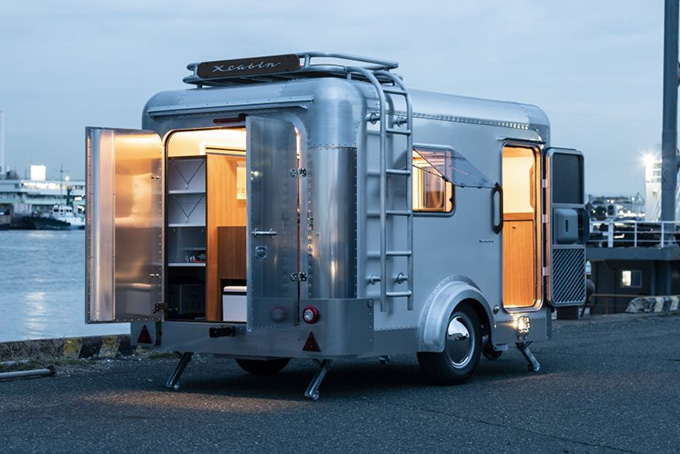
There’s always excitement in the air when a new camper company emerges with innovative designs and fresh perspectives. Today, that buzz surrounds the Japanese X-Cabin 300, a lightweight camper that’s turning heads with its beautiful design. Manufactured by X-Cabin, which is a sub-label of the Effect Meiji Corporation, this camper is a breath of fresh air in the camping world, despite its young beginnings in 2020. Situated in the bustling industrial hub of Nagoya City, Japan, X-Cabin has created a unique steel camper that’s bringing a new spin on the iconic Airstream look.
Features of the X-Cabin 300
The X-Cabin 300 is 15 feet long, 7 feet wide, and approximately 7 feet high. It has a galvanized steel chassis that provides a sturdy foundation and marine-grade stainless steel parts that ensure longevity and durability. Weighing in at around 1,600 pounds, this camper is remarkably lightweight, making it a breeze to tow and maneuver, even for those with smaller vehicles.
The X-Cabin 300 boasts a sleek silvery body that’s reminiscent of the classic Airstreams, making it an instant eye-catcher on the road. The body is less rounded than the classic Airstreams, but that doesn’t take away from its luster. Its streamlined design not only looks fantastic but also contributes to improved aerodynamics, enhancing fuel efficiency during your adventures.
Stepping inside the X-Cabin 300, you’ll find a space thoughtfully designed for both comfort and efficiency. The trailer features an uninterruptible power supply, ensuring you have a reliable source of electricity to power the lights and the air conditioning, no matter where your journey takes you.
One of the standout features is the dinette that can easily convert into a bed, maximizing the use of available space. Whether you’re enjoying a meal, working remotely, or simply relaxing, the dinette offers flexibility and convenience.
The X-Cabin 300 has 3 other variations
The X-Cabin 300 is all about customization and versatility. Alongside the base model, X-Cabin offers several other versions to cater to different preferences and needs. Here’s a quick rundown:
- The Glamp: Ideal for those who value convertible-style dinettes and fold-out beds, the Glamp version provides a balance between comfort and functionality.
- The Solo: If a larger bed is a priority, the Solo version has you covered. Enjoy a spacious sleeping area without compromising on other amenities.
- The FT (Food Truck): For entrepreneurial spirits or foodies, the FT version offers a layout optimized for selling food.
You also have the choice between a tailgate or double doors on the back of the camper, allowing you to tailor the camper’s access to your specific needs.
The base model X-Cabin 300 starts at $39,400, which is a lot cheaper than Airstream’s 16ft Bambi, which starts at $60,400. That said, you should expect to see a markup in fees because the X-Cabin and its variations are all made in Japan. The Glamp version starts at $42,100, the Food Truck version at approximately $31,350, and the Solo version at $48,800, providing a range of choices to suit various budgets and preferences.
The X-Cabin 300 is a lightweight, Airstream-inspired design, with durable construction and customizable options that make it a compelling choice for outdoor enthusiasts, adventurers, and those seeking the freedom of the open road. Get ready to hit the road and create unforgettable memories with this Japanese gem that’s set to become a classic in its own right.



